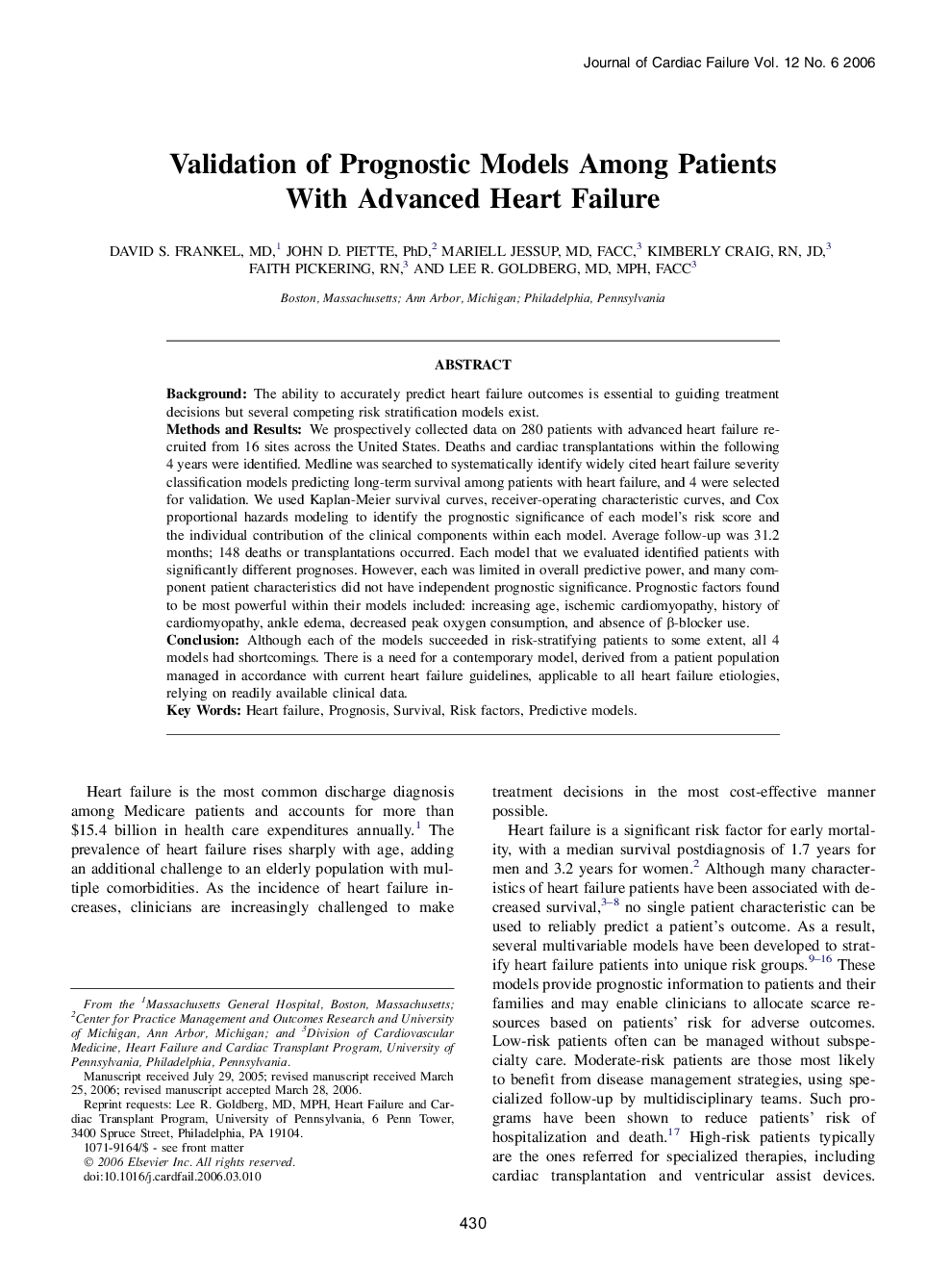| Article ID | Journal | Published Year | Pages | File Type |
|---|---|---|---|---|
| 2961803 | Journal of Cardiac Failure | 2006 | 9 Pages |
BackgroundThe ability to accurately predict heart failure outcomes is essential to guiding treatment decisions but several competing risk stratification models exist.Methods and ResultsWe prospectively collected data on 280 patients with advanced heart failure recruited from 16 sites across the United States. Deaths and cardiac transplantations within the following 4 years were identified. Medline was searched to systematically identify widely cited heart failure severity classification models predicting long-term survival among patients with heart failure, and 4 were selected for validation. We used Kaplan-Meier survival curves, receiver-operating characteristic curves, and Cox proportional hazards modeling to identify the prognostic significance of each model's risk score and the individual contribution of the clinical components within each model. Average follow-up was 31.2 months; 148 deaths or transplantations occurred. Each model that we evaluated identified patients with significantly different prognoses. However, each was limited in overall predictive power, and many component patient characteristics did not have independent prognostic significance. Prognostic factors found to be most powerful within their models included: increasing age, ischemic cardiomyopathy, history of cardiomyopathy, ankle edema, decreased peak oxygen consumption, and absence of β-blocker use.ConclusionAlthough each of the models succeeded in risk-stratifying patients to some extent, all 4 models had shortcomings. There is a need for a contemporary model, derived from a patient population managed in accordance with current heart failure guidelines, applicable to all heart failure etiologies, relying on readily available clinical data.
